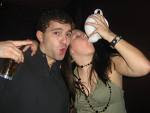If you or someone close to you are having any typical symptoms of diabetes, even though you both are not known to have diabetes, arrange a rendezvous to see a physician as soon as possible. When you make the engagement, tell the operator that you are concerned about diabetes. Try as well to make arrangements with a laboratory for blood sugar testing before the consultation.
Call a doctor right away if the patient is known to suffer from diabetes and any of the following apply:
*** The patient is showing diabetes symptoms. This may mean that his/her glycemia level is not under control despite treatment.
*** The diabetic's blood sugar levels, when tested, are constantly high (more than 200 mg/dL). Steady high blood sugar levels are the basic cause of all of the complications of diabetes.
*** The patient's glycemia level is frequently low (less than 60 mg/dL). This may mean that the management approach is too aggressive. It also may be an indication of infection or other strain on the system such as kidney malfunction, liver or adrenal gland failure, or the associated use of some medications.
*** The diabetic has an injury to the leg or foot, no matter how unimportant. Even the tiniest blister or cut can become very grave in a person with diabetes. Early diagnosis and handling of problems with the lower extremities and the feet, alongside with customary diabetic foot care, are decisive in preserving the normal function of the legs and avoiding amputation.
*** The patient suffers from a mild fever (less than 101.5°F). Fever is an indication of infection. In people with diabetes, many ordinary infections can potentially be more hazardous for them than for other people. Note down any symptoms, such as aching urination, redness or inflammation of the skin, pain in the belly, chest ache, or cough, that may point out where the infection is located.
*** The diabetic is revolted or vomiting but can maintain liquids down. The doctor may adjust medications whilst the patient is ailing and will probably recommend an imperative office visit or a call to the emergency unit. Unrelenting nausea and vomiting can be a signal of diabetic ketoacidosis, a potentially deadly condition, as well as a number of other dangerous illnesses.
*** The patient has a little sore (ulcer) on the leg or foot. Any non-healing ulcer or sore on the foot or leg of a diabetic must be seen by a medical professional without delay. A sore less than 1 inch crossways, not draining excretion, and not revealing deep bone or tissue can securely be evaluated in a physician's office provided that the patient does not have fever and their glycemia levels are well managed.
There are countless publications available in the Internet to those who have diabetes, those at risk for the disease, health care consultants and others who care for diabetics, or just want to know more about this condition.
I recently examined one easy-to-read and surprisingly affordable short book: "
Stop Prediabetes Now" which I would warmly recommend.
Ann Louise Gittleman, Ph.D., New York Times bestselling author says that "this unbiased book tells the truth about a condition that has clearly become a hidden epidemic in this country."
 Have you heard about any massage method or read about the subject? Lately I came across "The Diabetes Massage Method". This book shows you how to utilize treatments and techniques that have been shown to be effective and safe for diabetics. It makes it easy, convenient and pleasurable for diabetics of any age and physical condition to massage themselves, thus fighting complications such as poor circulation, neuropathy and pain.
Have you heard about any massage method or read about the subject? Lately I came across "The Diabetes Massage Method". This book shows you how to utilize treatments and techniques that have been shown to be effective and safe for diabetics. It makes it easy, convenient and pleasurable for diabetics of any age and physical condition to massage themselves, thus fighting complications such as poor circulation, neuropathy and pain.





















